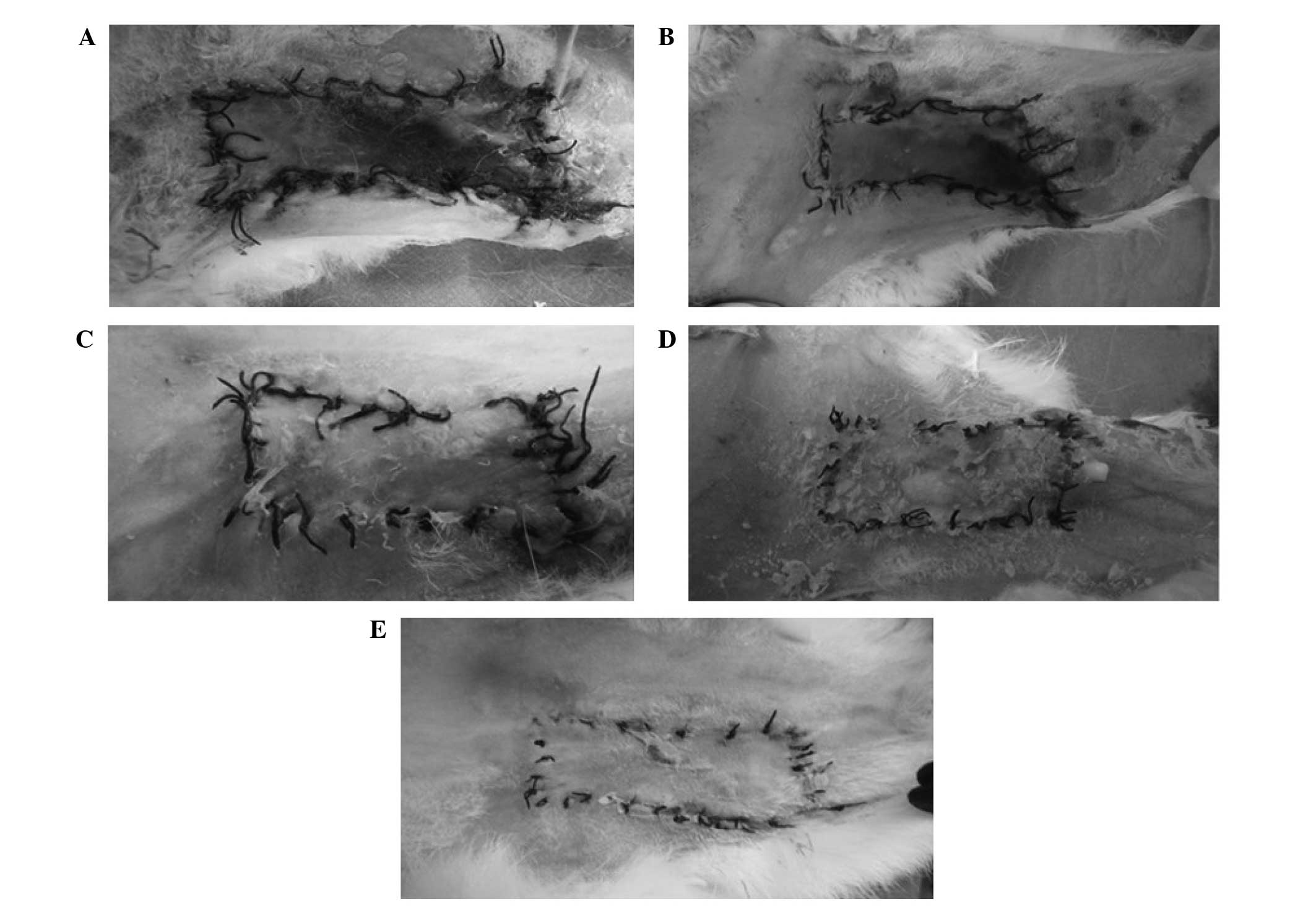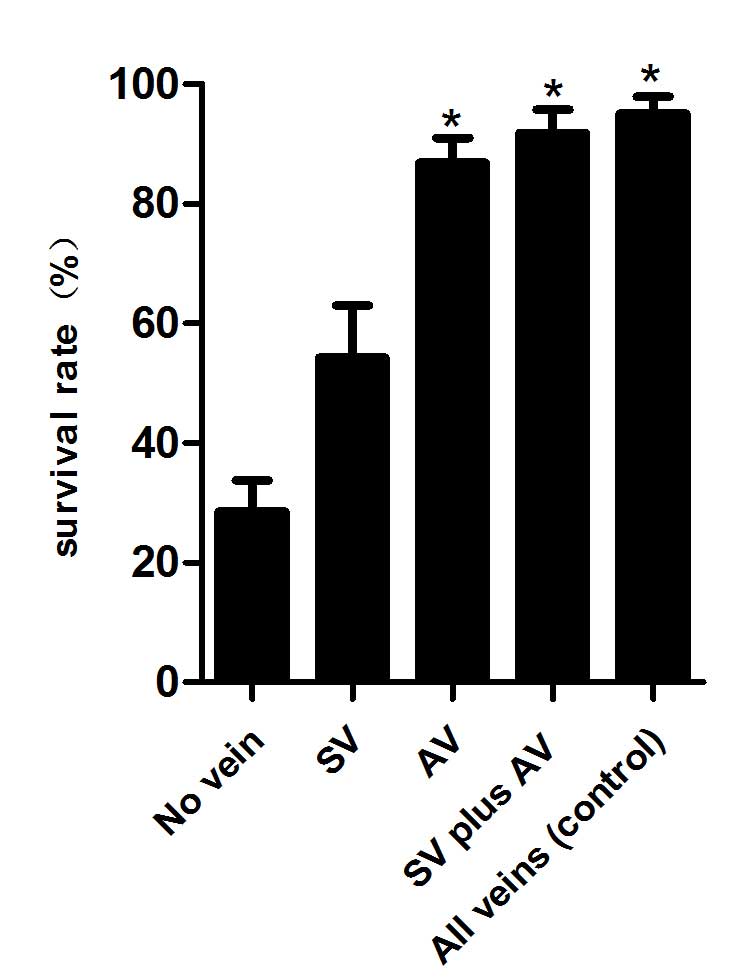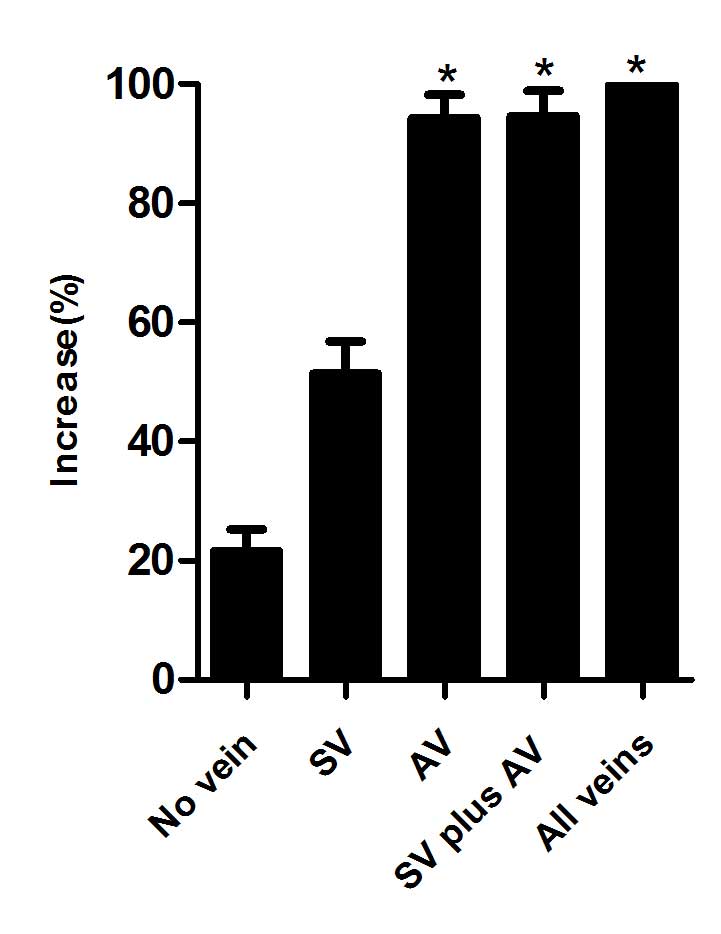|
1
|
Mao H, Shi Z, Yin W, Dong W and Wapner KL:
Reconstruction of great toe soft-tissue defect with the
retrograde-flow medial pedis island flap. Plast Reconstr Surg.
134:120e–127e. 2014. View Article : Google Scholar : PubMed/NCBI
|
|
2
|
Nikkhah D and Jones M: The bilobed flap as
a lifeboat flap for a forearm soft tissue defect. J Plast Reconstr
Aesthet Surg. 68:1153–1154. 2015. View Article : Google Scholar : PubMed/NCBI
|
|
3
|
Chen C, Tang P and Zhang X: Treatment of
soft-tissue loss with nerve defect in the finger using the
boomerang nerve flap. Plast Reconstr Surg. 131:44e–54e. 2013.
View Article : Google Scholar : PubMed/NCBI
|
|
4
|
Melton LJ III: Does high-trauma fracture
increase the risk of subsequent osteoporotic fracture? Nat Clin
Pract Endocrinol Metab. 4:316–317. 2008.PubMed/NCBI
|
|
5
|
Soutar DS, Scheker LR, Tanner NS and
McGregor IA: The radial forearm flap: A versatile method for
intra-oral reconstruction. Br J Plast Surg. 36:1–8. 1983.
View Article : Google Scholar : PubMed/NCBI
|
|
6
|
Foucher G, van Genechten F, Merle N and
Michon J: A compound radial artery forearm flap in hand surgery: An
original modification of the Chinese forearm flap. Br J Plast Surg.
37:139–148. 1984. View Article : Google Scholar : PubMed/NCBI
|
|
7
|
Hsiao YC, Yang JY, Chang CJ, Lin CH, Chang
SY and Chuang SS: Flow-through anterolateral thigh flap for
reconstruction in electrical burns of the severely damaged upper
extremity. Burns. 39:515–521. 2013. View Article : Google Scholar : PubMed/NCBI
|
|
8
|
Miyamoto S, Kayano S, Fujiki M, Kamizono
K, Fukunaga Y and Sakuraba M: Flow-through divided latissimus dorsi
musculocutaneous flap for large extremity defects. Ann Plast Surg.
74:199–203. 2015. View Article : Google Scholar : PubMed/NCBI
|
|
9
|
Parr JM, Adams BM and Wagels M:
Flow-through flap for salvage of fibula osseocutaneous vascular
variations: a surgical approach and proposed modification of its
classification. J Oral Maxillofac Surg. 72:1197–1202. 2014.
View Article : Google Scholar : PubMed/NCBI
|
|
10
|
Jones-Bolin S: Guidelines for the care and
use of laboratory animals in biomedical research. Curr Protoc
Pharmacol Appendix. 4:4B2012.
|
|
11
|
Pitulescu ME and Adams RH: Regulation of
signaling interactions and receptor endocytosis in growing blood
vessels. Cell Adh Migr. 8:366–377. 2014. View Article : Google Scholar : PubMed/NCBI
|
|
12
|
Bao P, Kodra A, Tomic-Canic M, Golinko MS,
Ehrlich HP and Brem H: The role of vascular endothelial growth
factor in wound healing. J Surg Res. 153:347–358. 2009. View Article : Google Scholar : PubMed/NCBI
|
|
13
|
Keswani SG, Balaji S, Le LD, Leung A,
Parvadia JK, Frischer J, Yamano S, Taichman N and Crombleholme TM:
Role of salivary vascular endothelial growth factor (VEGF) in
palatal mucosal wound healing. Wound Repair Regen. 21:554–562.
2013. View Article : Google Scholar : PubMed/NCBI
|
|
14
|
Yang JL, Zhang GL and Zhao LX: Delayed of
reverse sural nerve flap to repair large soft tissue defect on
foot: A case report. Zhongguo Gu Shang. 26:906–907. 2013.(In
Chinese). PubMed/NCBI
|
|
15
|
Lu S and Chai Y: Clinical application of
sural fasciomyocutaneous perforator flap in repair of soft tissue
defect in weight-bearing area of foot. Zhongguo Xiu Fu Chong Jian
Wai Ke Za Zhi. 28:1494–1497. 2014.(In Chinese). PubMed/NCBI
|
|
16
|
Persichetti P, Brunetti B, Aveta A and
Segreto F: Reverse-flow medial sural artery perforator flap:
Pedicle extension for distal lower limb defects. Ann Plast Surg.
70:246–247. 2013. View Article : Google Scholar : PubMed/NCBI
|
|
17
|
Shahzad MN, Ahmed N and Qureshi KH:
Reverse flow posterior interosseous flap: Experience with 53 flaps
at Nishtar Hospital, Multan. J Pak Med Assoc. 62:950–954.
2012.PubMed/NCBI
|
|
18
|
Koshima I, Kawada S, Etoh H, Kawamura S,
Moriguchi T and Sonoh H: Flow-through anterior thigh flaps for
one-stage reconstruction of soft-tissue defects and
revascularization of ischemic extremities. Plast Reconstr Surg.
95:252–260. 1995. View Article : Google Scholar : PubMed/NCBI
|
|
19
|
Kasten SJ, Chung KC and Tong L:
Simultaneous revascularization and soft tissue coverage in the
traumatized upper extremity with a flow-through radial forearm free
flap. J Trauma. 47:416–419. 1999. View Article : Google Scholar : PubMed/NCBI
|
|
20
|
Nişanci M, Selçuk I and Duman H:
Flow-through use of the osteomusculocutaneous free fibular flap.
Ann Plast Surg. 48:435–438. 2002. View Article : Google Scholar : PubMed/NCBI
|
|
21
|
Miyamoto S, Okazaki M, Ohura N, Shiraishi
T, Takushima A and Harii K: Comparative study of different
combinations of microvascular anastomoses in a rat model:
End-to-end, end-to-side and flow-through anastomosis. Plast
Reconstr Surg. 122:449–455. 2008. View Article : Google Scholar : PubMed/NCBI
|
|
22
|
Miyamoto S, Kayano S, Fujiki M, Chuman H,
Kawai A and Sakuraba M: Early mobilization after free-flap transfer
to the lower extremities: Preferential use of flow-through
anastomosis. Plast Reconstr Surg Glob Open. 2:e1272014. View Article : Google Scholar : PubMed/NCBI
|
|
23
|
Karacalar A and Ozcan M: Free arterialized
venous flap for the reconstruction of defects of the hand: New
modifications. J Reconstr Microsurg. 10:243–248. 1994. View Article : Google Scholar : PubMed/NCBI
|
|
24
|
Yan H, Fan C, Gao W, Chen Z, Li Z and Chi
Z: Finger pulp reconstruction with free flaps from the upper
extremity. Microsurgery. 32:406–414. 2012. View Article : Google Scholar : PubMed/NCBI
|
|
25
|
Nakayama Y, Soeda S and Kasai Y: Flaps
nourished by arterial inflow through the venous system: An
experimental investigation. Plast Reconstr Surg. 67:328–334. 1981.
View Article : Google Scholar : PubMed/NCBI
|
|
26
|
Baek SM, Weinberg H, Song Y, Park CG and
Biller HF: Experimental studies in the survival of venous island
flaps without arterial inflow. Plast Reconstr Surg. 75:88–95. 1985.
View Article : Google Scholar : PubMed/NCBI
|
|
27
|
Chavoin JP, Rouge D, Vachaud M, Boccalon H
and Costagliola M: Island flaps with an exclusively venous pedicle.
A report of eleven cases and a preliminary haemodynamic study. Br J
Plast Surg. 40:149–154. 1987. View Article : Google Scholar : PubMed/NCBI
|
|
28
|
Matsushita K, Firrell JC, Ogden L and Tsai
TM: Blood flow and tissue survival in the rabbit venous flap. Plast
Reconstr Surg. 91:127–137. 1993. View Article : Google Scholar : PubMed/NCBI
|
|
29
|
Kells AF, Broyles JM, Simoa AF, Lewis VO
and Sacks JM: Anterolateral thigh flow-through flap in hand
salvage. Eplasty. 13:e192013.PubMed/NCBI
|
|
30
|
Yokota K, Sunagawa T, Suzuki O, Nakanishi
M and Ochi M: Short interposed pedicle of flow-through
anterolateral thigh flap for reliable reconstruction of damaged
upper extremity. J Reconstr Microsurg. 27:109–114. 2011. View Article : Google Scholar : PubMed/NCBI
|
|
31
|
Kroll SS, Schusterman MA, Reece GP, Miller
MJ, Evans GR, Robb GL and Baldwin BJ: Timing of pedicle thrombosis
and flap loss after free-tissue transfer. Plast Reconstr Surg.
98:1230–1233. 1996. View Article : Google Scholar : PubMed/NCBI
|
|
32
|
Chen KT, Mardini S, Chuang DC, Lin CH,
Cheng MH, Lin YT, Huang WC, Tsao CK and Wei FC: Timing of
presentation of the first signs of vascular compromise dictates the
salvage outcome of free flap transfers. Plast Reconstr Surg.
120:187–195. 2007. View Article : Google Scholar : PubMed/NCBI
|
|
33
|
Hanasono MM, Kocak E, Ogunleye O, Hartley
CJ and Miller MJ: One versus two venous anastomoses in
microvascular free flap surgery. Plast Reconstr Surg.
126:1548–1557. 2010. View Article : Google Scholar : PubMed/NCBI
|
|
34
|
Ross GL, Ang ES, Lannon D, Addison P,
Golger A, Novak CB, Lipa JE, Gullane PJ and Neligan PC: Ten-year
experience of free flaps in head and neck surgery. How necessary is
a second venous anastomosis? Head Neck. 30:1086–1089.
2008.PubMed/NCBI
|
|
35
|
Blondeel PN, Arnstein M, Verstraete K,
Depuydt K, Van Landuyt KH, Monstrey SJ and Kroll SS: Venous
congestion and blood flow in free transverse rectus abdominis
myocutaneous and deep inferior epigastric perforator flaps. Plast
Reconstr Surg. 106:1295–1299. 2000. View Article : Google Scholar : PubMed/NCBI
|
|
36
|
Kwon SS, Chang H, Minn KW and Lee TJ:
Venous drainage system of the transverse rectus abdominis
musculocutaneous flap. Scand J Plast Reconstr Surg Hand Surg.
43:312–314. 2009. View Article : Google Scholar : PubMed/NCBI
|















